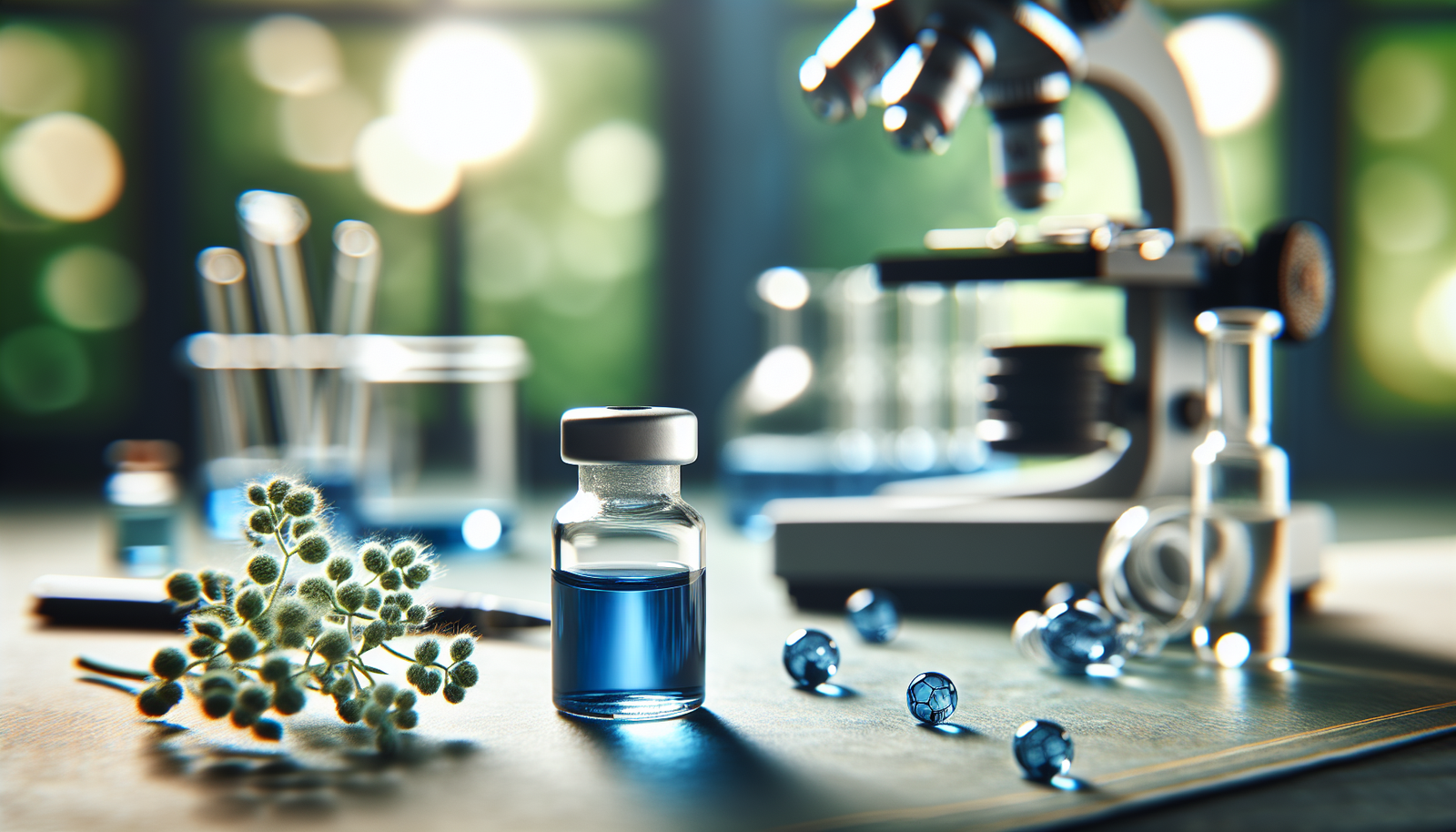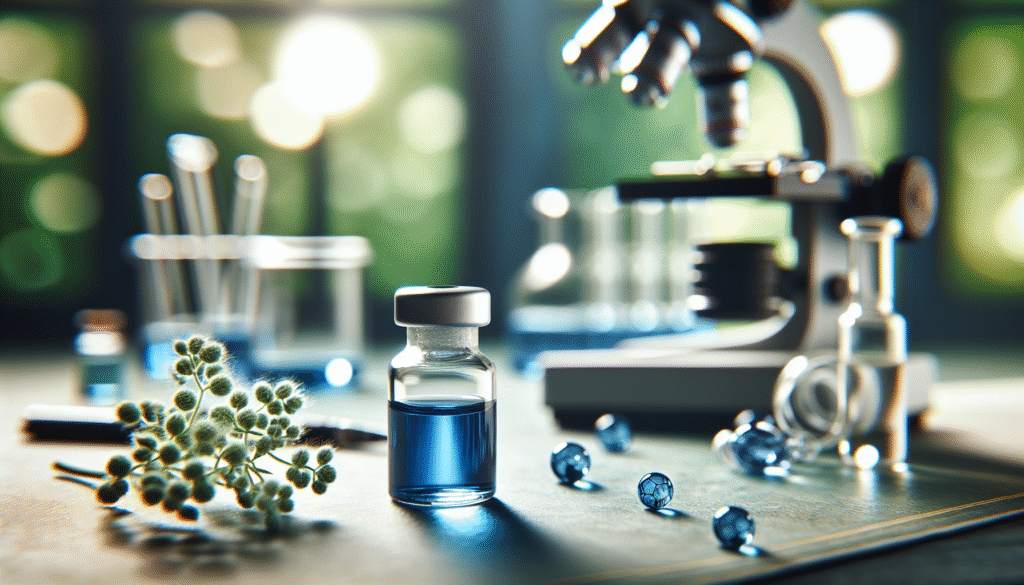
What if your daily routine could benefit from a compound known for its remarkable properties beyond what is commonly known? This is where methylene blue comes into play, a traditional dye with properties that extend far beyond its initial uses. This article will delve deeply into the antioxidant properties of methylene blue and its implications for health and wellness.

Understanding Methylene Blue
Methylene blue is a synthetic compound first synthesized in 1876 and has been used primarily as a dye. Over time, it was discovered that this compound possesses biological significance, particularly in its role as a redox agent in various biological systems. It is often used in laboratories and clinical settings, primarily in staining techniques and as a medication for certain medical conditions.
Historical Context
Originally, methylene blue was introduced in the field of biology as a vital stain for bacteria. Its ability to distinguish live cells from dead ones proved invaluable in microbiological studies. Over the years, researchers began investigating additional therapeutic potentials, especially its neuroprotective and antioxidant properties, leading to increased interest in its applications in modern medicine and health supplementation.
Chemical Structure
The chemical structure of methylene blue is represented by the formula C16H18ClN3S. It is a heterocyclic compound that contains multiple ring structures, allowing it to exhibit redox behavior in biological systems. This structure is fundamental to its function, enabling methylene blue to interact with various cellular processes that contribute to antioxidant activity.
The Science of Antioxidants
Antioxidants are compounds that help neutralize free radicals—unstable molecules that can cause oxidative stress leading to cellular damage. Your body produces free radicals during normal metabolism, but external factors such as pollution, UV rays, and unhealthy lifestyles can exacerbate their production.
Importance of Antioxidants in Health
The role of antioxidants in health is tremendous. They are essential in safeguarding cellular functions, promoting longevity, and reducing the risk of chronic diseases such as heart disease, diabetes, and cancer.
Mechanism of Action
Antioxidants, including methylene blue, exert their effects by donating electrons to free radicals. This neutralization prevents the free radicals from causing further harm. Methylene blue acts not only as a direct scavenger of free radicals but also participates in redox cycling, thereby enhancing its antioxidant capacity through regeneration of other antioxidants in the body.
Methylene Blue’s Role as an Antioxidant
Methylene blue’s multifaceted qualities make it a topic of research within the field of antioxidant therapy. Understanding its capabilities provides insight into how it may be utilized for health benefits.
Bioavailability and Metabolism
Methylene blue has a favorable bioavailability profile when administered in controlled doses. It is readily absorbed and distributed in tissues, enhancing its potential antioxidant effects. The liver metabolizes it, and while certain metabolites contribute to its functionality, the parent compound remains biologically active, playing a significant role in cellular protection.
Antioxidant Activity in Cellular Models
Research indicates that methylene blue exhibits strong antioxidant properties in various cellular and animal models. Studies show that it can reduce oxidative stress markers, restore mitochondrial function, and improve cellular resilience in the face of damaging oxidative agents.
Clinical Implications
-
Neuroprotection: One of the most promising fields is the potential use of methylene blue for neuroprotection. Studies have suggested its ability to improve cognitive function and offer protective effects in neurodegenerative diseases like Alzheimer’s and Parkinson’s.
-
Heart Health: Methylene blue may also play a role in cardiovascular health by improving endothelial function and decreasing oxidative stress, which are pivotal factors in preventing heart diseases.
Current Research Trends
Ongoing research is examining methylene blue for various clinical applications. This includes its potential usage in mitigating conditions characterized by oxidative stress, including traumatic brain injury, stroke, and age-related macular degeneration. The findings thus far hold promise but require further investigation to fully establish therapeutic protocols and safety profiles.
How to Use Methylene Blue Safely
If you’re considering using methylene blue as an antioxidant supplement, understanding the appropriate dosages, potential side effects, and interactions is vital.
Recommended Dosage
Dosage guidelines are not universally established, given the variability of individual health conditions. If you are considering supplementation, it is crucial to consult with a healthcare professional. That said, research has typically used doses ranging from 0.5 mg to 4 mg per kilogram of body weight for therapeutic purposes.
Side Effects
While generally well-tolerated, methylene blue can cause certain side effects in some individuals. These may include:
- Discoloration of urine and skin
- Gastrointestinal distress
- Allergic reactions in rare cases
Interactions with Medications
Methylene blue can interact with several medications, especially those that affect serotonin levels, such as certain antidepressants. It is essential to disclose all medications you are taking to your healthcare provider if considering methylene blue.

Additional Considerations and Cautions
Incorporating methylene blue into your health regimen requires an informed approach. Understanding its full impact on your body is paramount.
Potential Benefits vs. Risks
Balancing the potential benefits against the risks is a part of responsible supplementation. While promising, methylene blue is not a magic bullet. It should be considered part of an overall health strategy that includes a balanced diet, regular exercise, and proper medical care.
Long-term Usage
The long-term effects of methylene blue have not been fully established. Limited research indicates that prolonged use could lead to accumulated side effects, thus emphasizing the importance of medical supervision.
The Role of Lifestyle
Your overall lifestyle can significantly influence the effectiveness of any antioxidant supplementation. Regular physical activity, a balanced diet rich in natural antioxidants (like fruits and vegetables), and adequate hydration will complement the effects of methylene blue.
Future Directions in Research
The investigation into methylene blue’s antioxidant properties is only beginning to scratch the surface of its potential. As researchers continue to study its biological mechanisms, new applications may arise.
Innovations in Delivery Methods
Advancements in nanotechnology and drug delivery systems could enhance the bioavailability and efficacy of methylene blue. Research into optimizing formulations could revolutionize its clinical applicability.
Broader Health Applications
Future studies may also focus on the psychological and physiological implications of methylene blue in chronic health conditions that are exacerbated by oxidative stress, opening avenues for integrative treatment protocols.

Conclusion
Understanding methylene blue and its antioxidant properties provides a nuanced perspective on its potential benefits for health and wellness. It offers a fascinating glimpse into how traditional compounds can reshape modern approaches to health, urging you to consider it thoughtfully within a broader health paradigm. Always prioritize informed decision-making through consultation with qualified healthcare professionals to ensure safety and efficacy in any health journey you embark upon.
Remember, while compounds like methylene blue can play a role in enhancing your health, they work best when integrated into a lifestyle that emphasizes overall well-being and proactive health measures. Through this integrated approach, you can empower yourself to make informed choices that truly benefit your long-term health.